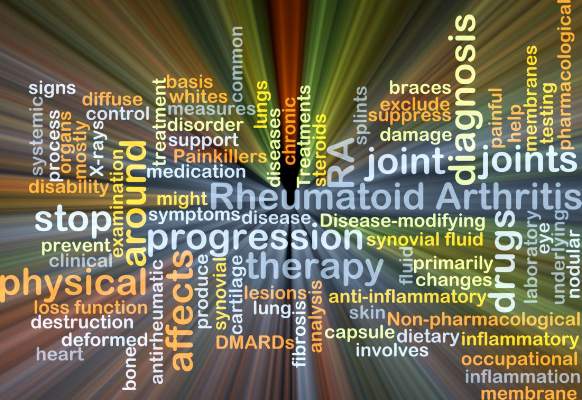FROM ARTHRITIS CARE & RESEARCH
Every current guideline and consensus statement regarding systemic glucocorticoid therapy in rheumatoid arthritis falls short of offering clinicians practical, evidence-based guidance, according to a systematic review of all 15 such documents published in 2011-2015 in English, French, German, and Spanish.
Despite the abundant and convincing evidence that systemic glucocorticoids are very beneficial and despite their widespread use for rheumatoid arthritis (RA), fewer than half of the existing guidelines explicitly recommend these agents. Even fewer specify the optimal treatment duration, and about one-third don’t even provide dosage recommendations.
The reason? Lack of good-quality evidence. “Despite over 60 years of use, the medical community has been inept at producing a solid evidence base for the proper application of glucocorticoid therapy,” said Yannick Palmowski of the department of rheumatology and clinical immunology at Charité University Medicine, Berlin, and his associates.
Their report, published in Arthritis Care & Research, does not address intra-articular administration of glucocorticoids. The 15 sets of guidelines were developed by 13 different rheumatology associations and networks across five continents ( Arthritis Care Res. 2016 Dec 28. doi: 10.1002/acr.23185 ).
In this comprehensive review of 3,742 relevant publications, there was general agreement that initial treatment should center on disease-modifying antirheumatic drugs (DMARDs) plus systemic glucocorticoids. If remission, or at least reduced disease activity with preserved function, doesn’t occur within 3-6 months, another synthetic or a biologic DMARD should be tried, with or without concomitant glucocorticoids. But none of the guidelines adequately address the timing or frequency of use, either in early RA or in established disease.
All the guidelines refer to using “low-dose” or the “lowest possible dose” to avoid adverse effects, but what they mean by that is unclear. Some define “low-dose” as less than or equal to 7.5 mg per day, but others define it at higher levels, up to 15 mg per day. “Moderate” and “high” doses are not defined at all, and some guidelines refer to unspecified “low to moderate doses” or “moderately high” doses. This causes “considerable confusion for the practicing clinician and investigators,” Mr. Palmowski and his associates noted.
Similarly, the guidelines are unclear as to which routes of administration are preferred, or are even acceptable. Most specifically mention oral systemic glucocorticoids; four mention the intramuscular route, with one guideline calling this preferable “in certain situations” because it facilitates better dosing control. One guideline recommends intravenous glucocorticoids, but only for severe extra-articular manifestations. And another advocates parenteral methylprednisolone in patients who have “weaning difficulties,” but gives no further details about using this route.
The guidelines all are similarly vague regarding the duration of glucocorticoid therapy. Two do not address treatment duration at all; the other 13 recommend “short-term” or “the shortest possible duration,” but do not adequately define these terms. Six guidelines discuss maximum treatment duration, but they define that as anywhere from 3 to 24 months. Only 4 of the 15 guidelines discuss treatment periods of longer than 6 months, and all of them are vague and sometimes contradict each other regarding such prolonged use.
The daily timing of glucocorticoid therapy is virtually ignored in all the guidelines, even though researchers have known for more than 50 years that the time of day when these agents are taken has a considerable impact on their efficacy and safety. Similarly, the use of delayed-release prednisone and the question of single versus multiple doses per day “remain to be tackled,” Mr. Palmowski and his associates said.
Tapering of glucocorticoid therapy to avoid triggering a recurrence is another topic given short shrift. Five of the guidelines don’t address it at all, and another five merely state that glucocorticoids should be tapered “as rapidly as possible.” The three guidelines that do stress the importance of gradual dose reductions offer conflicting advice about accomplishing that.
Existing guidelines also neglect to address patient-specific factors that may require special attention. Two explicitly allow the use of these agents during pregnancy, but the other 13 do not even consider the question. Three guidelines address possible interactions with other medications, but the other 12 do not. Only one guideline discusses the use of glucocorticoids in relation to common RA-associated cormorbidities such as cardiovascular disease and diabetes. And none of the guidelines make any age- or sex-specific recommendations.
Finally, many of the current guidelines fail to fully identify their funding sources. Five that never mentioned funding at all “were published (and probably funded) by rheumatology associations.” And at least two of the guidelines that ignored funding sources did receive support from pharmaceutical companies, Mr. Palmowski and his associates said.
This study was sponsored by the GLORIA (Glucocorticoid Low-dose Outcome in RA) Project of the European Commission’s Horizon 2020 Initiative. Mr. Palmowski reported having no relevant financial disclosures; his associates reported ties to Merck, Roche, Mundipharma, Pfizer, SUN, Novartis, Bristol-Myers Squibb, Takeda, UCB, Serono, and Horizon Pharma.





